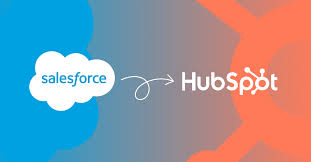How To Streamline Sales With Salesforce Hubspot Integration?

Integrating Salesforce with HubSpot can revolutionize your sales process by combining the strengths of two powerful platforms. Salesforce offers robust CRM capabilities, while HubSpot excels in marketing automation and lead generation. This integration provides a seamless flow of data between your sales and marketing teams, enhancing collaboration and efficiency. By synchronizing contacts, leads, and opportunities, businesses can achieve a unified view of their customer interactions and streamline their workflows. This introduction sets the stage for exploring how Salesforce HubSpot Integration can transform your sales strategy, improve lead management, and drive revenue growth. It’s essential to understand how these platforms work together to harness their full potential for your business.
Overview Of Salesforce Hubspot Integration Benefits
The Salesforce HubSpot Integration offers numerous benefits that can significantly enhance your sales and marketing efforts. By synchronizing data between the two platforms, businesses can achieve a single source of truth, which improves data accuracy and consistency. This integration facilitates seamless communication between sales and marketing teams, ensuring that both departments are aligned in their efforts. Additionally, it allows for more efficient lead management by automatically updating and nurturing leads based on their interactions. This results in improved lead conversion rates and a more streamlined sales process. Ultimately, the Salesforce HubSpot Integration empowers businesses to optimize their marketing strategies and boost overall sales performance.
Setting Up Salesforce Hubspot Integration For Success
To set up Salesforce HubSpot Integration for success, begin by ensuring that both platforms are properly configured and that you have the necessary permissions to connect them. Start by installing the HubSpot-Salesforce Integration app from the Salesforce AppExchange or HubSpot’s marketplace. Once installed, follow the setup wizard to map your Salesforce fields to HubSpot properties, ensuring that data flows seamlessly between the two systems. It’s crucial to define your synchronization preferences, such as how often data should be updated and which records to sync. After initial setup, test the integration thoroughly to identify and resolve any issues. Proper setup ensures that your integration runs smoothly and effectively supports your sales and marketing efforts.
Key Features To Leverage In Salesforce Hubspot Integration
The Salesforce HubSpot Integration offers several key features that can significantly enhance your sales and marketing processes. One of the most valuable features is the ability to synchronize contacts and leads between the two platforms, ensuring that both teams have access to the most up-to-date information. Additionally, the integration allows for automated lead nurturing, where HubSpot workflows can trigger actions based on Salesforce data, such as sending personalized emails or creating tasks for sales reps. Another important feature is the bi-directional sync of activity and engagement data, which helps sales teams track interactions and follow up effectively. Leveraging these features can streamline your sales process and improve overall efficiency.
Optimizing Workflows Through Salesforce Hubspot Integration
Optimizing workflows through Salesforce HubSpot Integration involves leveraging the automation and data synchronization capabilities of both platforms. Start by identifying repetitive tasks and processes that can be automated, such as lead assignment, follow-up emails, and data updates. Use HubSpot’s workflow automation to create triggers based on Salesforce data, such as automatically nurturing leads based on their activity or engagement. Additionally, ensure that your sales and marketing teams have clear visibility into each other’s activities by synchronizing notes, tasks, and communication logs. Regularly review and refine your workflows to address any bottlenecks and ensure that the integration continues to support your evolving business needs.
Tracking And Measuring Success With Salesforce Hubspot Integration
Tracking and measuring success with Salesforce HubSpot Integration involves setting clear objectives and using the integrated data to evaluate performance. Begin by defining key metrics, such as lead conversion rates, sales pipeline velocity, and marketing campaign ROI. Utilize HubSpot’s reporting tools to analyze lead behavior and engagement, and Salesforce’s analytics to track sales performance and pipeline health. The integration allows for comprehensive reporting by combining data from both platforms, providing insights into the effectiveness of your sales and marketing strategies. Regularly review these metrics to assess the impact of the integration, identify areas for improvement, and make data-driven decisions to enhance your overall performance.
Best Practices For Managing Salesforce Hubspot Integration
Managing Salesforce HubSpot Integration effectively requires adherence to best practices to ensure smooth operation and optimal performance. Start by maintaining clean and accurate data in both systems to prevent synchronization issues. Regularly review and update field mappings and synchronization settings to align with your business needs. Establish clear guidelines for how data should be entered and managed in both platforms to ensure consistency. Additionally, provide ongoing training for your sales and marketing teams to ensure they understand how to use the integrated features effectively. Regularly monitor the integration’s performance and address any issues promptly. Following these best practices helps maximize the benefits of the integration and supports your overall sales and marketing objectives.
Conclusion
The Salesforce HubSpot Integration offers significant advantages for businesses looking to streamline their sales and marketing processes. By combining the robust CRM capabilities of Salesforce with the marketing automation strengths of HubSpot, organizations can achieve greater efficiency, improved lead management, and enhanced collaboration between sales and marketing teams. Successful integration involves careful setup, leveraging key features, and addressing common challenges. By optimizing workflows, tracking success, and following best practices, businesses can fully realize the benefits of this powerful integration. Embracing these strategies will lead to a more effective sales process, better customer relationships, and ultimately, increased revenue growth.

Source: How To Streamline Sales With Salesforce Hubspot Integration?




